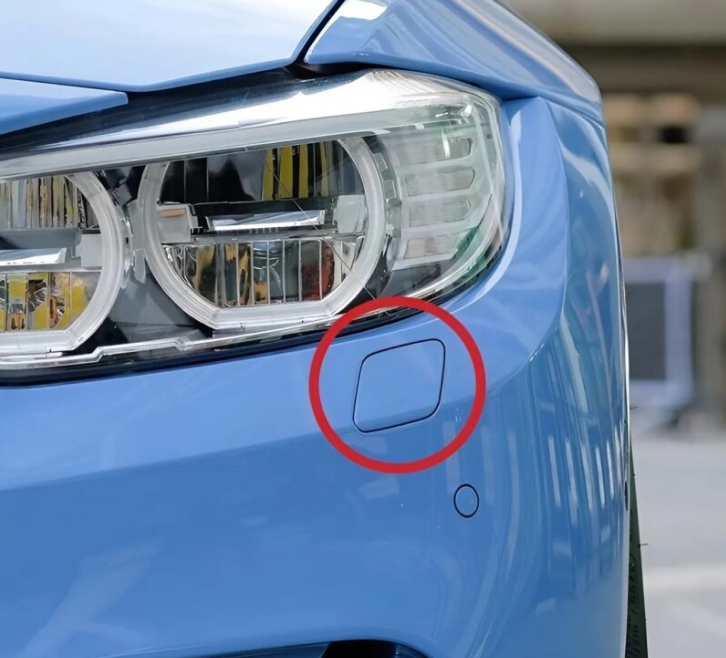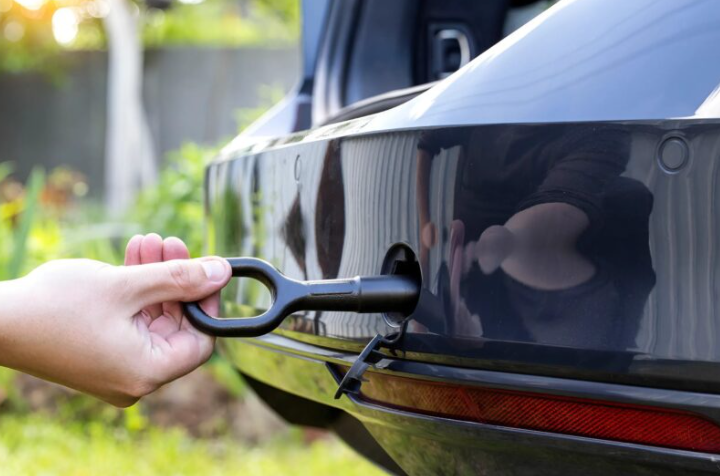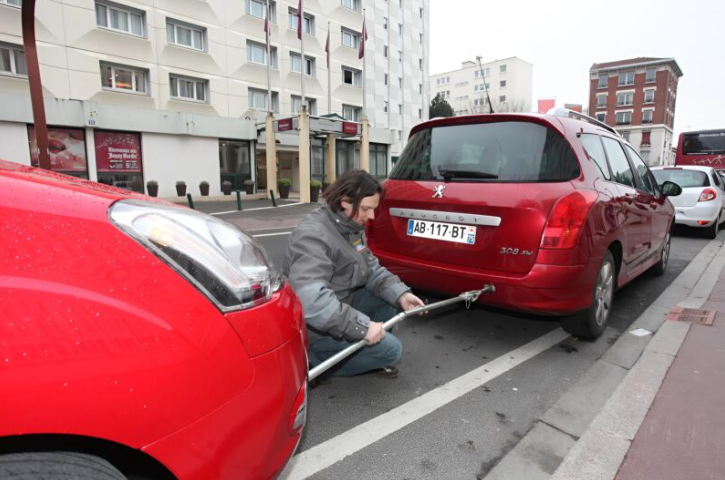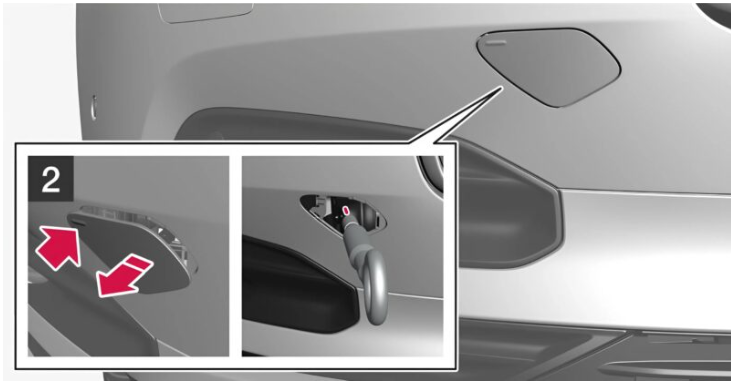Have you ever noticed a small square plastic panel on the front or rear bumper of your car? At first glance, it seems insignificant—maybe even decorative. But this little panel serves an essential function that most drivers don’t realize.
Hidden behind it is a tow hook attachment point, a crucial feature for safe and proper vehicle towing. If your car ever breaks down, gets stuck, or needs to be pulled out of a tough spot, this small panel gives you access to a strong towing eyelet designed specifically for the job.
Let’s dive into why this feature is important, how to use it correctly, and why understanding it can save you from costly mistakes.

What Is the Small Square Panel on Your Bumper?
Unlike trucks and off-road vehicles that have visible tow hooks, most modern cars have their towing points concealed. The small square panel on your bumper is actually a removable cover that hides the towing eye.
1. Why Is It Hidden?
Most car manufacturers choose to conceal towing hooks to maintain a clean, sleek design. Having a visible hook on the front or rear bumper would interfere with aerodynamics and aesthetics, so they design a discreet panel that blends seamlessly into the bumper.
2. Where Can You Find It?
- Front bumper: Usually positioned near one of the lower corners.
- Rear bumper: Located in a similar area, often near the center.
Checking your car’s manual can help you quickly locate these panels, so you’re prepared in case of an emergency.
What Is a Towing Eye and Why Is It Important?
The towing eye is a metal attachment point that allows for safe and controlled towing of a vehicle. It is designed to withstand the force of being pulled without damaging your car’s frame or bumper.
1. Why Not Attach a Tow Strap Anywhere?
One of the biggest mistakes people make is attaching a tow rope or strap to random parts of the car, such as the bumper, axle, or exhaust pipe. This can result in:
- Severe vehicle damage (bent or broken parts).
- Unsafe towing conditions (unsecured straps can snap).
- Increased repair costs due to improper handling.
By using the designated towing eyelet, you ensure that the force is distributed properly, preventing unnecessary damage.

2. Front and Rear Tow Hooks: When to Use Each
- Front tow hook → Used when your car needs to be pulled forward, such as when stuck in snow or mud.
- Rear tow hook → Used if your car is being transported on a tow truck or needs to be pulled backward.
How to Properly Use the Towing Eyelet
If you ever need to tow or be towed, follow these steps to safely attach a tow hook:
1. Remove the Cover Panel
- Use a small flathead screwdriver or your fingernail to gently pry open the panel.
- Some covers twist off, while others pop out—check your car’s manual if you’re unsure.
2. Insert the Tow Hook
- Most vehicles come with a screw-in tow hook, often found in the spare tire compartment or tool kit.
- Align the hook with the threaded socket inside the hole and screw it in tightly by hand.

3. Secure the Tow Strap or Cable
- Attach a high-strength tow strap or cable to the hook.
- Make sure the strap is properly secured without twisting or tangling.
4. Tow the Vehicle Carefully
- Start slowly to avoid sudden jerks that could damage the hook or strap.
- Keep the tow at a steady, controlled speed to prevent excessive stress on the vehicle.
Important Safety Precautions When Towing
Towing a car requires caution and proper technique to avoid damage or accidents. Here are some key safety tips:
1. Check the Towing Capacity
Every vehicle has a maximum towing weight limit. Exceeding this limit can:
- Damage the engine, transmission, and suspension.
- Increase the risk of losing control while towing.
Before towing, verify the weight your car can safely tow by checking the owner’s manual.

2. Avoid Sudden Movements
- Jerky movements can put stress on the tow hook, causing it to break or pull loose.
- Smooth acceleration and braking are essential for a safe tow.
3. Keep Communication Open
If two people are involved—one driving each car—use hand signals or a phone to stay in communication and ensure a coordinated tow.
4. Use Professional Help When in Doubt
If you’re not experienced with towing or dealing with a major breakdown, it’s always best to call a tow truck instead of risking further damage.
Why Every Driver Should Know About This Feature
Knowing where your car’s towing eyelet is located and how to use it can make a huge difference in emergency situations. Instead of guessing where to attach a tow strap, you’ll be able to quickly and safely secure your car for towing without causing damage.
Key Takeaways
✔ The small panel on your bumper hides the tow hook attachment point.
✔ Using the correct towing eyelet prevents unnecessary damage to your vehicle.
✔ Follow proper towing procedures to ensure safety and avoid costly repairs.
✔ Know your car’s towing limits before attempting any tow.
Next time you look at your car, take a moment to locate those hidden tow hook panels. It’s a small detail that can make a big difference when you need it most.
And now that you know what it’s for, have you ever had to use yours? 🚗💡